UK Drive: Mitsubishi Outlander PHEV is ideal for those ready to make the move to a hybrid
Ryan Hirons went to Worcestershire to see if Mitsubishi’s updated Outlander PHEV can still keep up with the competition

What is it?
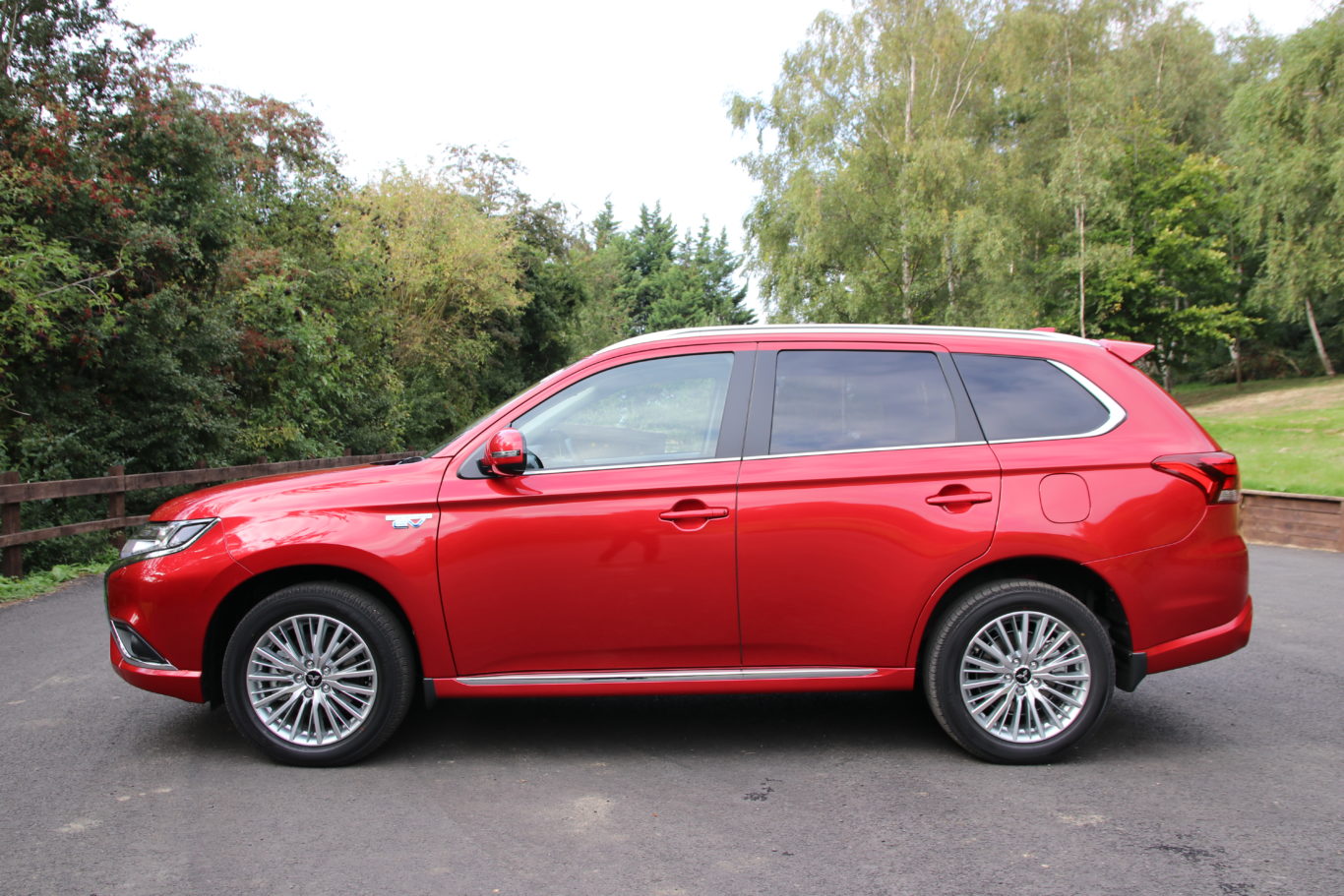
Think PHEV and you’re likely to think of the Mitsubishi Outlander. After all, the Japanese firm’s SUV has long been the best-selling plug-in hybrid vehicle in the UK – and continues to be so, having sold around 4,200 so far in 2018.
Mitsubishi is refusing to rest on its laurels though, despite the SUV being in something of a one-car class, and has given the Outlander PHEV a little refresh for the 2019 model year to ensure success and sales continue to roll its way. Is it enough to breathe new life into the arguably ageing machine though, or would people be better off waiting for a new generation?
What’s new?
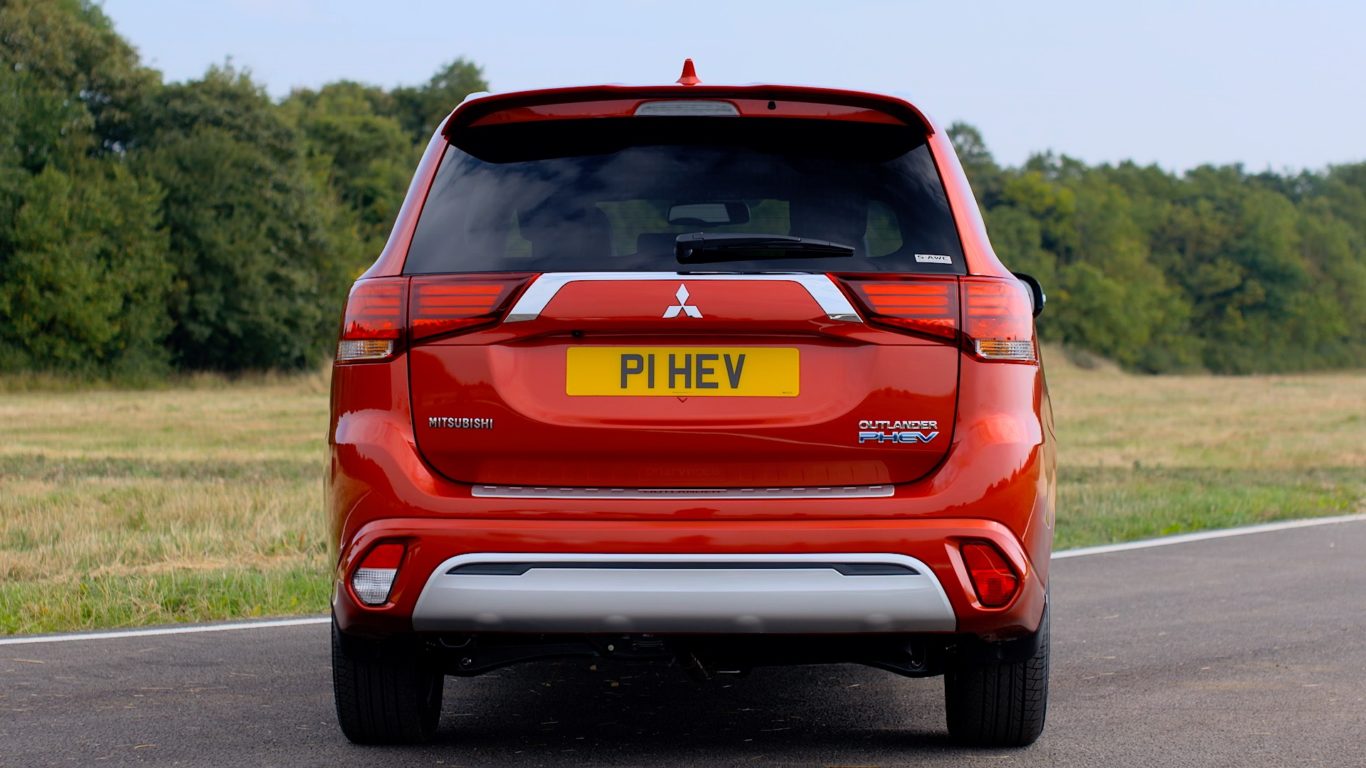
At first glance, you may be hard-pressed to notice any changes for the 2019 model year car but the revisions here are actually quite substantial.
The headline-grabbing difference is under the bonnet. The new 2.4-litre engine offers more power and better efficiency than its 2.0-litre predecessor, while a revised hybrid system has Mitsubishi claiming more range and improved battery performance too.
Hop inside the car and you’ll see further changes. More supportive seats have been brought in for the updated machine, along with a new instrument cluster, ‘more convenient’ USB ports and the addition of support for Android Auto and Apple CarPlay.
What’s under the bonnet?
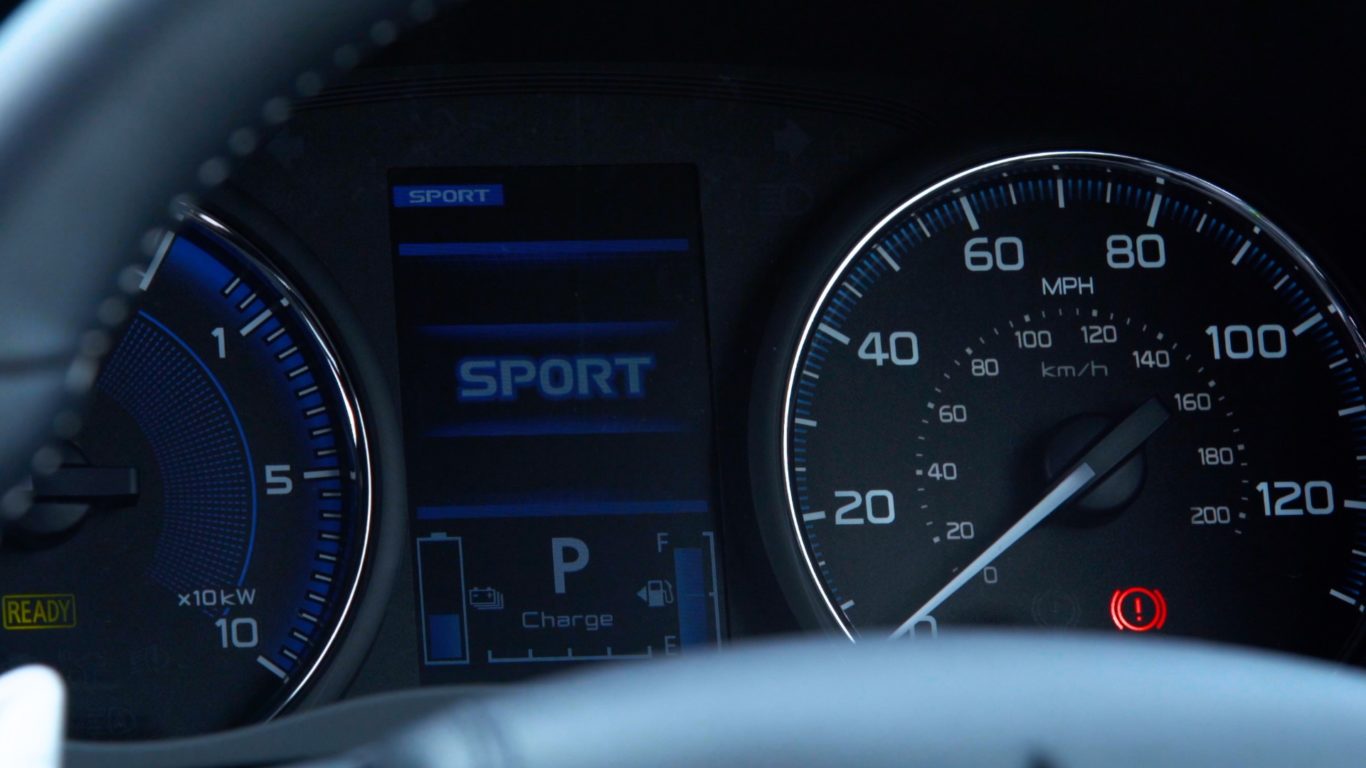
Powering the 2019 Mitsubishi Outlander PHEV is that revised 2.4-litre petrol-hybrid set-up mentioned earlier. The internal combustion engine produces 133bhp and 211Nm of torque, with a further 94bhp and 195Nm coming from the batteries – both of which are linked to a CVT transmission.
The result is a 0-60mph time of 10.3 seconds with a 105mph top speed possible. As for efficiency, Mitsubishi claims 139mpg is achievable on the combined cycle, with CO2 emissions of 46g/km.
It’s easy to see the improvements in the system, which feels more refined and fruitful than before. Perhaps most impressive is the EV range. It’s a claimed 28 miles, which realistically translates to enough for a daily commute — meaning you could theoretically never touch the petrol engine on day-to-day usage.
What’s it like to drive?
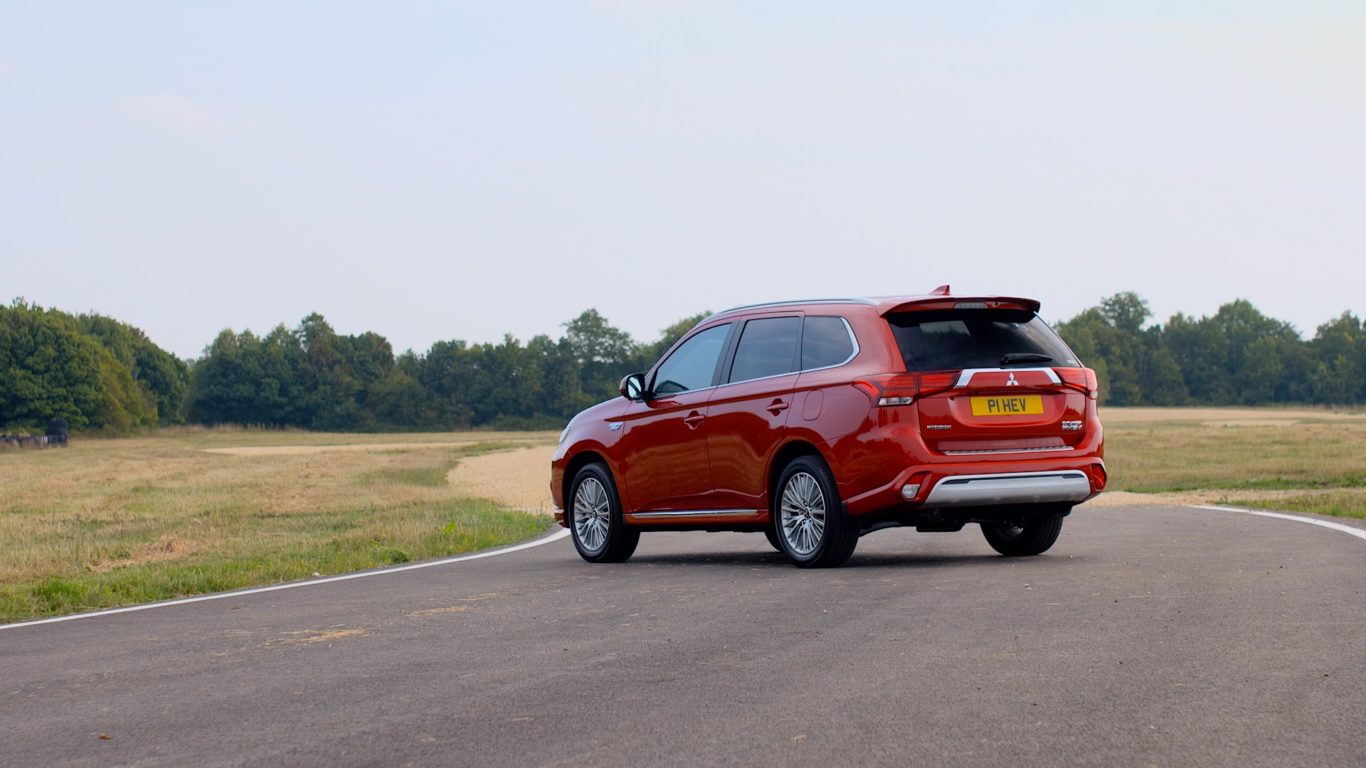
Differences behind the wheel of the Outlander PHEV are subtle yet effective. Ride comfort feels marginally better and the suspension more supple, while improved sound-deadening creates an overall more refined experience. The result is a car that’s more pleasant than before when used as a long-distance cruiser.
Around town, it’s very much identical to before. It doesn’t hide its large dimensions and feels pretty big on the road, although good visibility and the addition of a reversing camera allow it to be usable in tight spots.
Don’t let the increased power fool you into thinking this is a B-road juggernaut though – put your foot down and that impressive fuel economy will only be harmed.
How does it look?
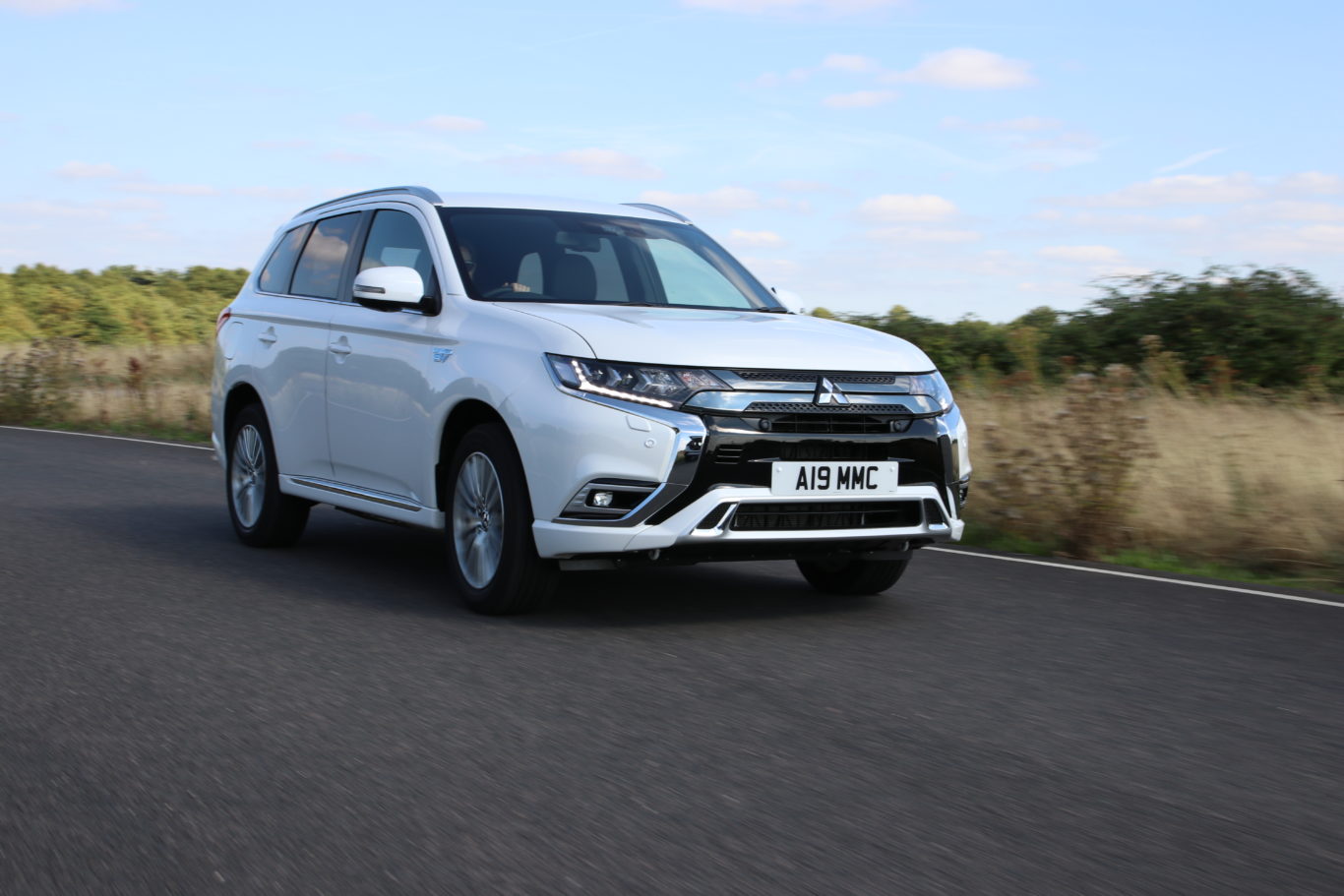
As mentioned, you may struggle to spot many aesthetic differences between the 2019 Outlander PHEV and the outgoing machine, but some revisions have been made.
A new front grille and bumpers feature along with updated fog lamp bezels, while a rear spoiler brings a fresh edge to the back of the car. There’s also a new 18-inch alloy wheel design available.
The Outlander PHEV is pretty inoffensive to look at, but it may struggle to capture the imagination. It’s a car that’s more about function than form, which is no bad thing, but those looking for sheer style may not find it here.
What’s it like inside?
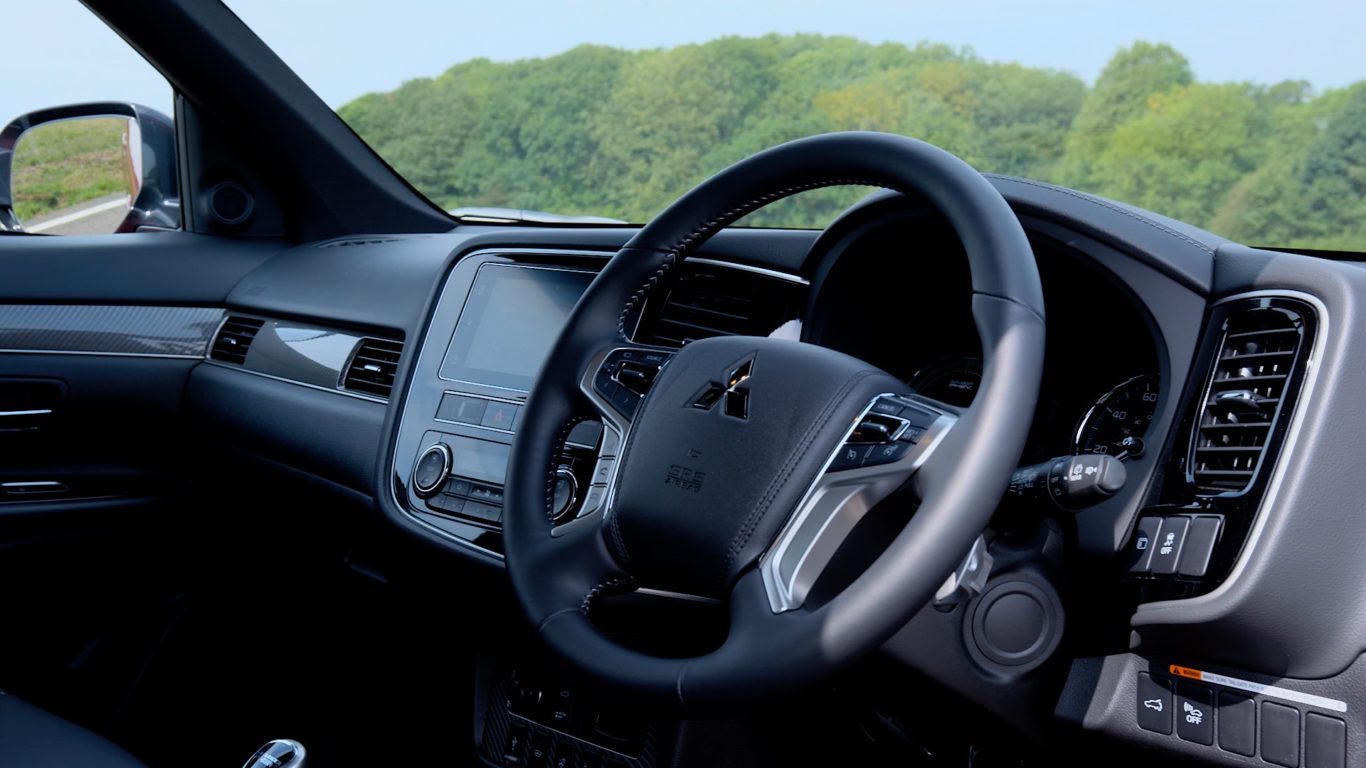
The cabin of the Outlander PHEV may have been tweaked, but it still falls flat when compared with premium SUV rivals. Plastics are a common feature, while the aluminium-effect trim placed inside our test car gave it a hint of early Noughties Lancer Evolution – which is no good thing.
The new seats are an improvement on those of the old car, but they’re quite firm and don’t provide the best support.
That said, the new instrument cluster is certainly an improvement, offering better clarity and a good amount of detail on the workings of the PHEV’s hybrid system.
Space inside the SUV remains unchanged – meaning 463 litres of room on offer, which is a respectable amount when you remember it’s also carrying a load of batteries back there.
What’s the spec like?
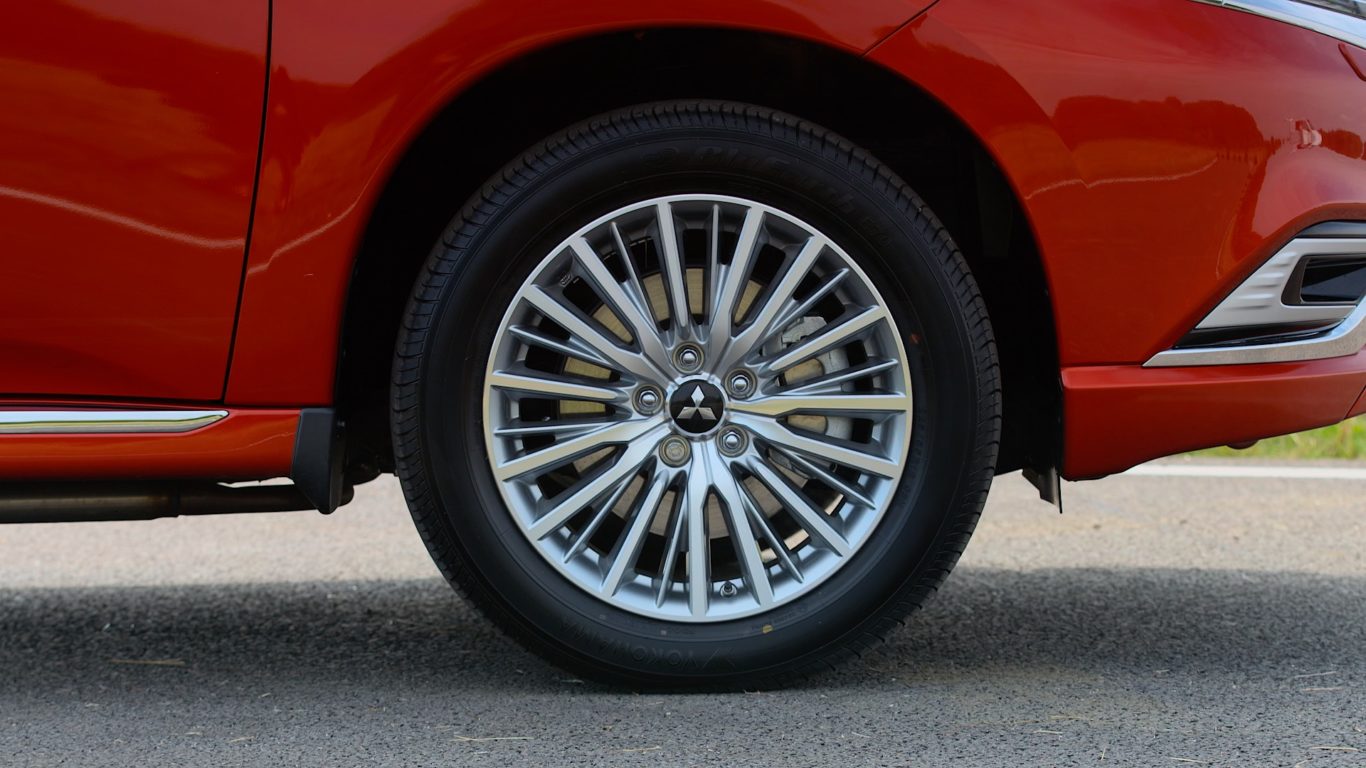
Standard equipment across the Outlander PHEV range includes a heated windscreen, cruise control, keyless start, dual-zone climate control, a reversing camera and heated seats.
We got behind the wheel of the car in 4hs spec, which brings a 360-degree camera, blind spot warning, rear cross traffic alert system, electric tailgate, LED headlamps, front and rear parking sensors, lane departure warning and adaptive cruise control to the table.
It’s an impressive equipment list, but that’s something you should expect of a car costing £34,255 that doesn’t quite boast an otherwise premium appeal. One notable absence is navigation, but the inclusion of Android Auto and Apple CarPlay support means smartphone owners can plug in their mobiles and use the respective mapping apps for no extra cost.
Verdict

Updates to the Mitsubishi Outlander PHEV have proved successful, with the car now more comfortable, efficient, well equipped and better to drive than ever.
The result is an SUV that should continue to do well on the sales front and makes even more sense if you have a reasonable commute yet require the practicality that something like a hatchback can’t offer.
There’s no need yet for a total overhaul, but there’s definitely scope for improvement when it comes to interior quality – and perhaps that’s crucial for the Outlander to be adopted by current owners of other premium SUVs.





